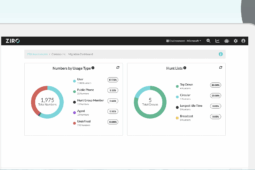
Effective call routing is at the heart of any well-run communication system. Poor call handling leads to delays, frustration, and negative experiences. It also leads to lost productivity in the form of over- and under-utilized staff.
However, with Microsoft Teams, your organization can have a centralized and streamlined call routing system that ensures every call is directed to the right person or department. In this ZIRO article, we’ll guide you through the steps to configure Microsoft Teams Call Routing for more efficient communication.
What Is Call Routing in Microsoft Teams?
Microsoft Teams call routing helps manage how calls are handled within an organization.
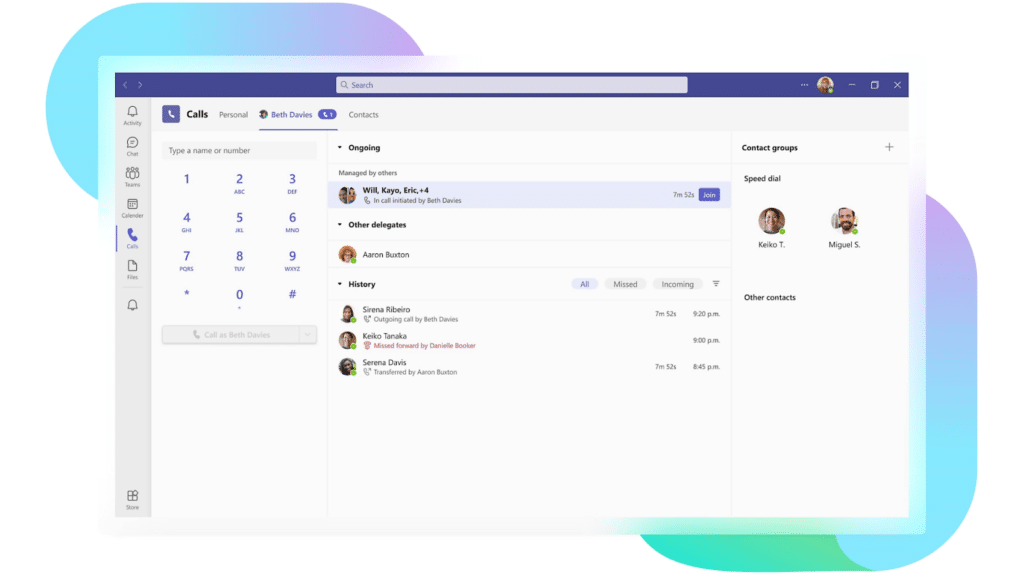
It supports routing for public switched telephone network (PSTN) calls, internal VoIP calls, and federated calls between Teams clients. This makes it valuable for all kinds of use cases, from communicating with partners to managing customer service calls.
With Teams call routing, you’re essentially setting up automated rules that dictate how Teams processes incoming calls. For example, with Microsoft Teams call routing set up, you can:
- Direct unanswered calls to voicemail
- Forward calls to another person or number
- Provide menu options for callers to navigate to the right department
- Hold callers in a queue until someone is available to answer
…and more.
Ultimately, it gives you several tools to optimize the efficiency of your business communication setup with relatively little effort on your end.
How to Set Up Call Routing in Microsoft Teams
Step 1: Access the Teams Admin Center
Log in to the Microsoft Teams Admin Center with your admin credentials. From the left-hand menu, go to Voice > Call Routing. This is where you will manage most call routing settings.
Step 2: Configure Auto Attendants
Auto attendants allow callers to route themselves to the appropriate department based on their input.
a. Create Auto Attendant
Go to Voice > Auto Attendants, then click Add to create a new auto attendant.
b. General Settings
Enter a name and description for the auto attendant. Set the language and time zone to match your organization’s needs.
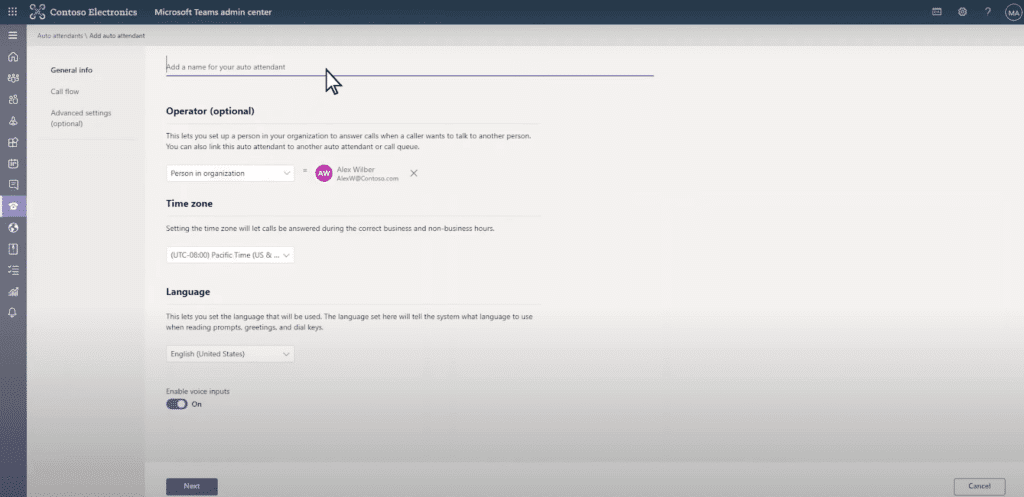
c. Call Flow
Set up the call flow, including greeting messages and routing, redirection, or call disconnection options.
d. Menu Options
Under “Play Menu Options,” create a menu (e.g., “Press 1 for Sales, Press 2 for Support”). Enable dial-by-name or dial-by-extension so callers can be routed directly to specific individuals.

Step 3: Set Up Call Queues
Call queues to distribute calls to designated team members who can assist with inquiries.
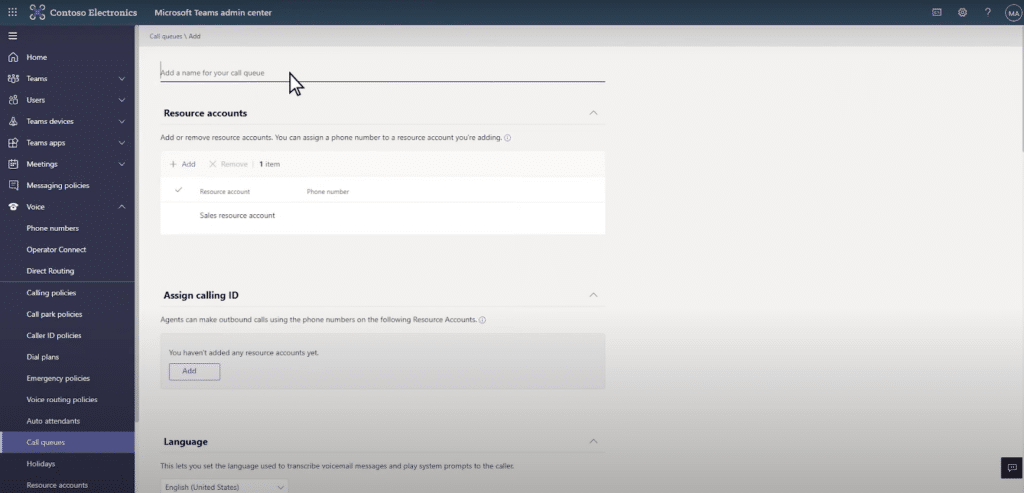
a. Create a Call Queue
Go to Voice > Call Queues and click Add. This will open a form to create a new call queue.
b. Customizable Settings
You can customize your call queues with options like “Language,” “Greeting,” and “Music on Hold.”
c. Assign Call Queues
Assign queues to specific channels, teams, or individuals.
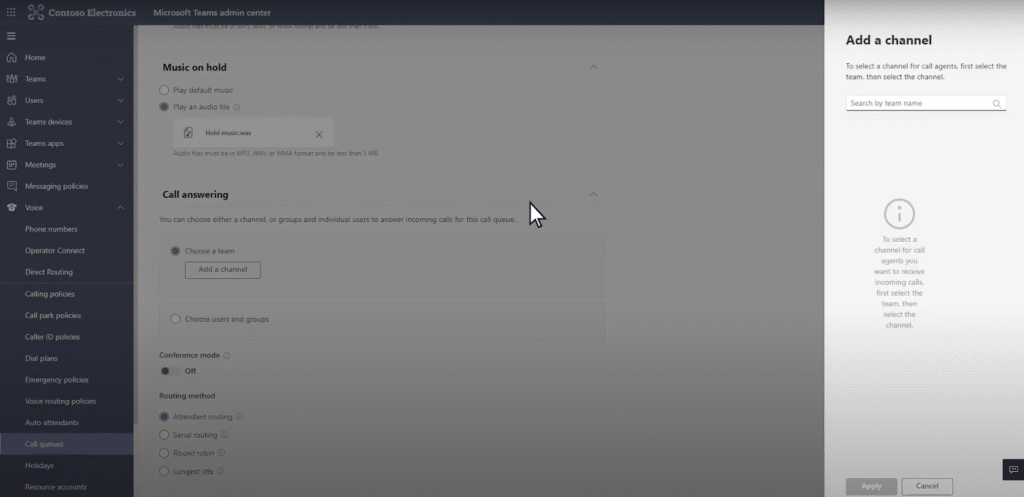
d. Overflow and Timeout
Set overflow rules for full queues, such as redirecting to voicemail or a less busy queue. Adjust timeout settings to ensure unanswered calls are managed properly.
Step 4: Configure Call Forwarding and Groups
Call forwarding and groups ensure calls are directed to the right person or team, even if the primary recipient is unavailable.
- Call Forwarding: Users can set up call forwarding in their Teams client under Settings > Calls. They can forward calls to voicemail, another number, or a colleague. This is useful for managing calls when out of the office or during busy periods.
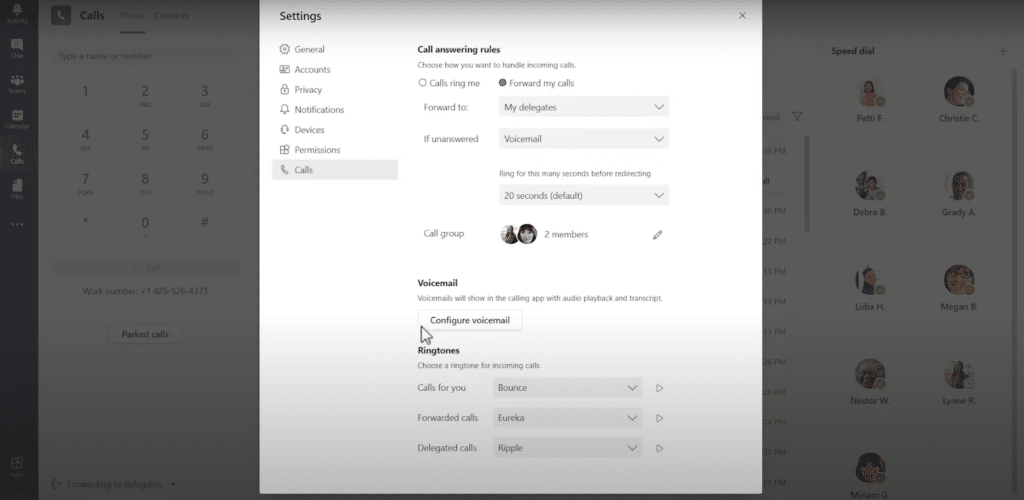
- Call Groups: Users can also set up call groups in their Teams client under Settings > Calls. After adding other employees to their call groups, users can also choose whether to ring everyone simultaneously or at a specific interval. This ensures that calls are answered promptly by any available team member.
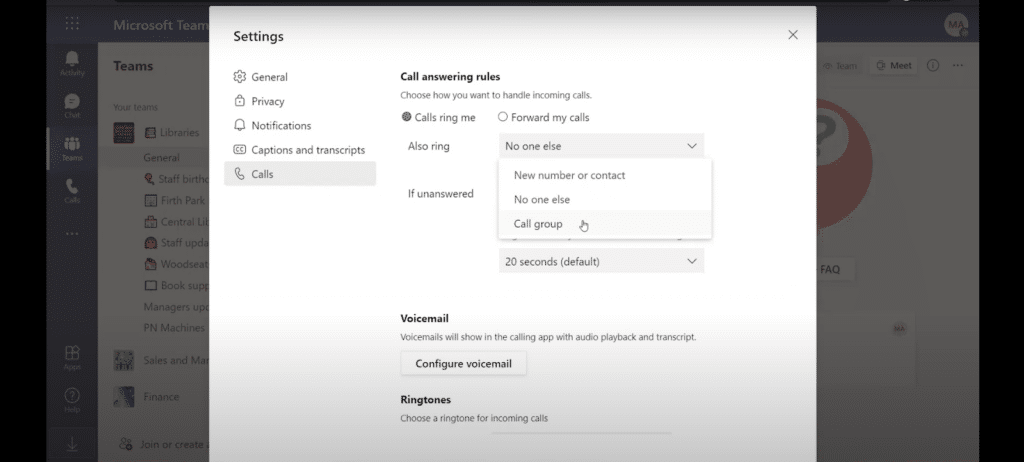
Step 5: Manage Unassigned Numbers
Unassigned numbers can be routed to a user, a resource account linked to an auto attendant or call queue, or to an announcement service.
- Go to Voice > Phone Numbers, then select the Routing Rules tab and click Add.
- Choose the type of phone number pattern to be preconfigured and complete the pattern and routing option.
- For advanced setups, enter the regular expression for the phone number pattern and routing option.
- To create a routing rule directly for an unassigned number, go to Voice > Phone Numbers, select an unassigned number, and then click Route. Name and describe the rule, set the evaluation order, select the routing option, and click Save.
While routing calls for unassigned numbers is important, organizations must also ensure active numbers are properly assigned. At ZIRO, we offer a simple and efficient way to assign and manage numbers through the ZIRO Platform for Microsoft.
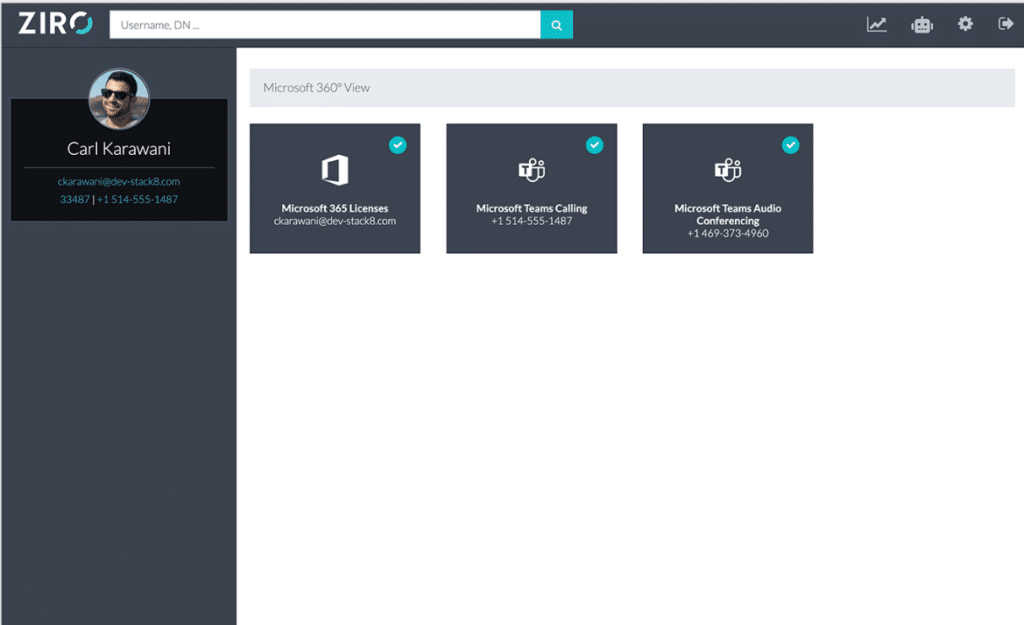
It includes features like Dial Plan Management, Extension Dialing, Automated DID Porting, and Automated & Help Desk Microsoft Teams Provisioning.
Best Practices for Setting up Microsoft Teams Call Routing
Be Mindful of Complex Setups
The steps above will work for many organizations—but in the world of unified communications (UC), one-size-fits-all solutions are rare. Some organizations will have more complex setups, like a hybrid deployment or multi-site routing needs.
In these cases, working with experts like ZIRO can ensure a smooth and efficient implementation for your Microsoft Teams call routing.
Set Up PSTN Connectivity
Ensure your organization can make and receive calls via the Public Switched Telephone Network (PSTN). If using Microsoft Teams Direct Routing, ensure your Session Border Controller (SBC) is configured and connected to Teams.
For a more efficient and risk-free setup, consider our DRaaS solution, supported by ZIRO-managed SBCs that can be customized for compatibility.
Analyze Call Patterns
Review your current call system to identify the types and frequency of incoming calls. Use this data to create a well-structured Auto Attendant and Call Queue system that aligns with your organization’s needs.
Prioritize Common Options
Place the most frequently used options at the beginning of your menu. This helps route calls quickly and efficiently, reducing wait times for callers.
Smart Queue Management
Avoid assigning service numbers directly to Call queues unless they operate 24/7. Instead, use an Auto attendant to redirect calls to the queue during business hours, ensuring proper handling during off-hours and holidays.
Automate Basic Information
For frequently asked questions like business hours, location, or website details, set up an Auto Attendant with pre-recorded messages. This allows your team to focus on more complex inquiries.
Perfecting Your Microsoft Teams Call Routing Setup
Setting up call routing in Microsoft Teams is important for improving communication and customer satisfaction. Features like Auto attendant, Call queue, and Call forwarding ensure your organization handles calls quickly and effectively.
At ZIRO, we specialize in optimizing your organization’s internal and external communication with our tailored Microsoft Teams Direct Routing as a Service (DRaaS) solution. It offers a seamless direct and call routing configuration without the associated complexity and risk.Get in touch today to get started.
Ready to take your unified communications from headache to hassle-free?
No throwing darts at proposals or contracts. No battling through the back-end. No nonsense, no run-around.


